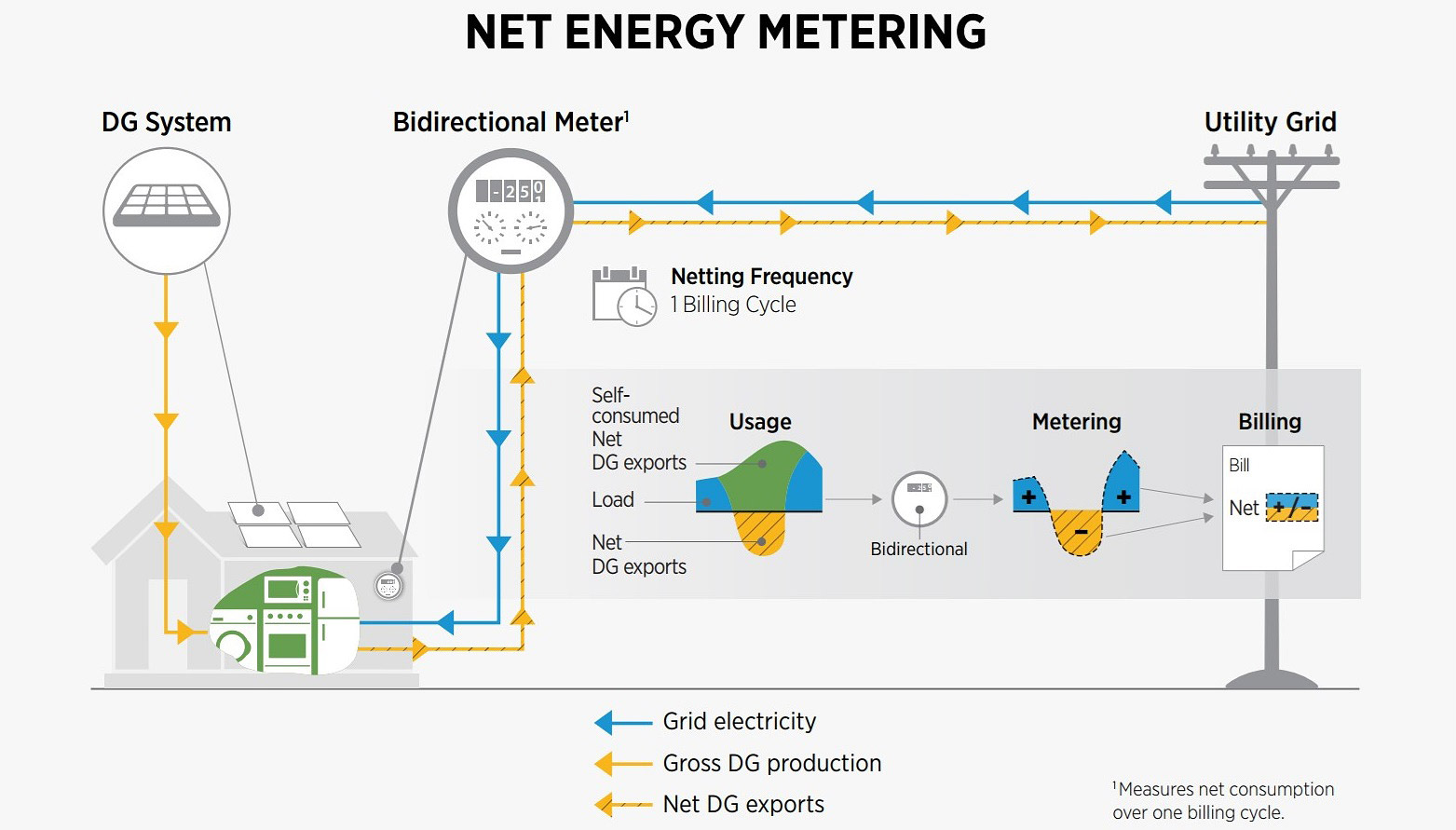If you've been looking into saving money by transitioning to clean and renewable solar energy, you might have seen the term "distributed generation," aka "DG" getting thrown around.
But what exactly do these industry buzzwords really mean?
And how does it differ from regular old solar power?
Defining DG
The National Renewable Energy Laboratory (NREL) defines "distributed generation" as "an electric power source that is located at or near the point of consumption." The terms "dispersed generation" or "decentralized generation" are sometimes used to convey the same idea.
In practical terms, any means of generating electricity you can think of that isn't part of some centralized power plant is likely to count as DG.
Two types of DG
Distributed generation energy sources come in two flavors: residential and commercial.
Examples from the residential sector include any of the following:
- Solar photovoltaic panels
- Small wind turbines
- Natural-gas-fired fuel cells
- Emergency backup generators, usually fueled by gasoline or diesel fuel
Whereas, examples of DG from the commercial sector include:
- Combined heat and power systems
- Solar photovoltaic panels
- Wind
- Hydropower
- Biomass combustion
- Municipal solid waste incineration
- Fuel cells fired by natural gas or biomass
- Backup generators and other reciprocating combustion engines
Compensating residential DG
Distributed Generation is related to another industry buzzword you may have encountered, "Net Metering" or "NEM" for short.
NEM is a method of metering and billing homeowners and businesses with distributed energy systems that remain connected to the grid, be they in the form of solar panels, small wind turbines, or whatever.
But while Pennsylvania, Ohio, and Maryland have all adopted NEM, there are at least two other systems currently used by other states. One is called "Net Billing," while the other is known as "Buy All Sell All."
Moreover, which compensation scheme your state has chosen will have an enormous impact on the return on investment you can expect from going solar.
Net Metering
If you live in a state like Pennsylvania that has adopted Net Metering, you're lucky since it's the most consumer-friendly method for metering residential DG energy systems.
In states with Net Metering:
- DG system owners use the electricity generated by their systems to power their homes
- Any excess power is sent back into the grid. Compensation is in the form of a credit valued at the same rate the customer would be charged should they need to draw power.
- A bidirectional meter that measures both imported and exported energy is required
In effect, Net Metering lets you "bank" the excess solar energy your panels produce during peak sun hours for use at night or at other times when there's insufficient sunlight to generate all the energy you need.

(Source: NREL, 2017)
Net Billing
If you're not lucky enough to live in a state with Net Metering, Net Billing is the next best option.
Just like Net Metering:
DG system owners use the electricity generated by their systems to power their homes, and any excess power gets sent back into the grid
However, that's where the similarities end.
- DG systems that send power back into the grid receive a substantially lower rate than what they're charged when they need to draw power
- Credits can only be used in the very same billing cycle in which they were earned
Buy All Sell All
" Buy All Sell All" is by far the worst compensation scheme for consumers. One might even describe it as positively unfair.
In states with Buy All Sell All, consumers who've installed solar panels or some other DG energy system aren't even allowed to use any of the power that's generated.
Buy All Sell All means that:
All DG-generated electricity goes directly onto the grid, for which customers are compensated at substantially less than the regular retail rate
Customers then import the energy they need to run their homes, for which they pay the full retail rate
Final word
As these examples clearly show, the decisions your state legislators make about how to compensate Distributed Energy systems have an enormous impact on the growth of clean and renewable energy sources like solar power.
Let's hope more states start choosing Pennsylvania's fair and equitable Net Metering model.